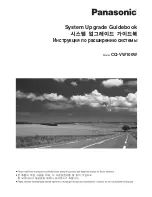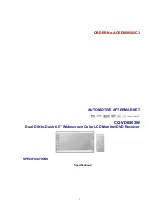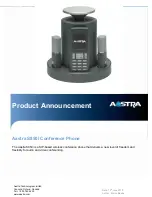
System Networking Feature Enhancements
(Stand Alone Feature)
Basic Impact Attendant Support
Beginning with Software Release 170 basic Impact Attendant operation is available across the network.
The Impact Attendant can request extension information from both the node and hub systems; however
the names of remote extensions are not available. Basic Impact Attendant support includes intercom
calling and provides the following status indications for remote stations:
Out Of Service—the remote station is out of service at the remote site,
Idle—the remote station is not active on a call,
Busy—the remote station is busy on a call.
Dial Zero Extension
It is possible to override the local node's setting for operator station and, through programming,
substitute a network station as the dial 0 extension. If the installer does not select a network station as
the dial 0 extension, dial 0 calls on a local node will route to that system's operator station if one is
available.
Under SYSTEM/NETWORKING/NETWORK PROPERTIES, installers select the
Dial Zero Ext
…
feature to launch a pop-up dialog. From this dialog, they select the extension that rings when users dials
a zero.
Directed Call Pickup
With call pick up, station users can dial a code plus an intercom number of a ringing or on-hold station
and answer the call from the users' station. Software Release 170 extends this feature across the nodes of
the network so that station users of one network node can pick up calls that are ringing at stations
connected to another node on the network.
DSS/BLF Support (Network Station Monitor)
Any station in a networked arrangement can direct station select (DSS) up to 30 remote network
stations. Any station in the network can have busy lamp field (BLF) status light appearance for up to 30
remote stations. This feature is available to Impact Attendant as well as telephone stations.
For each node (but not the hub), VMMI configures two extension lists. The
Send
list, identifies the
extension on that node that users elsewhere on the network can monitor. The
Receive
list identifies
extensions elsewhere on the network that users on that node can monitor. While both the
Send
and
Receive
lists each accept up to 30 entries, the combined total of both lists cannot exceed 30 entries.
An extension must either be on the hub or on a
Send
list of another node for the system to accept its
addition to a
Receive
list. The hub system automatically monitors the
Send
lists of all nodes.
System Networking Feature Enhancements
(Stand Alone Feature)
– 15
Explaining The Software Release Features
GCA40–219
Содержание DXP Plus Series
Страница 1: ...Digital Communications System R ...
Страница 363: ...Automatic Call Distributor Technical Manual R QuickQ DXP ...
Страница 424: ...Automatic Call Distributor System Manager s Guide R QuickQ DXP ...
Страница 500: ...Wrap up Time 1 6 Wrapping Up A Call 4 3 Z Zoom Box A 2 GCA70 271 Index I 3 ...
Страница 628: ...Interconnecting The VMI X Installing And Programming For ExecuMail IMI89 206 Installing And Programming For ExecuMail 5 ...
Страница 677: ...Connecting The Equipment Installing And Programming The OPX X IMI89 209 Installing The OPX X 7 ...
Страница 728: ...DP I I I I and FX Series Digital Communications Systems Understanding The Visual Man Machine Interface COMDlA ...
Страница 1112: ...9 08 8 90 1 13 4 78 3 94 UNIS029 TAB003 PLS page 6 GCA40 130 DXP Plus General Description 11B Telephone Features ...










































